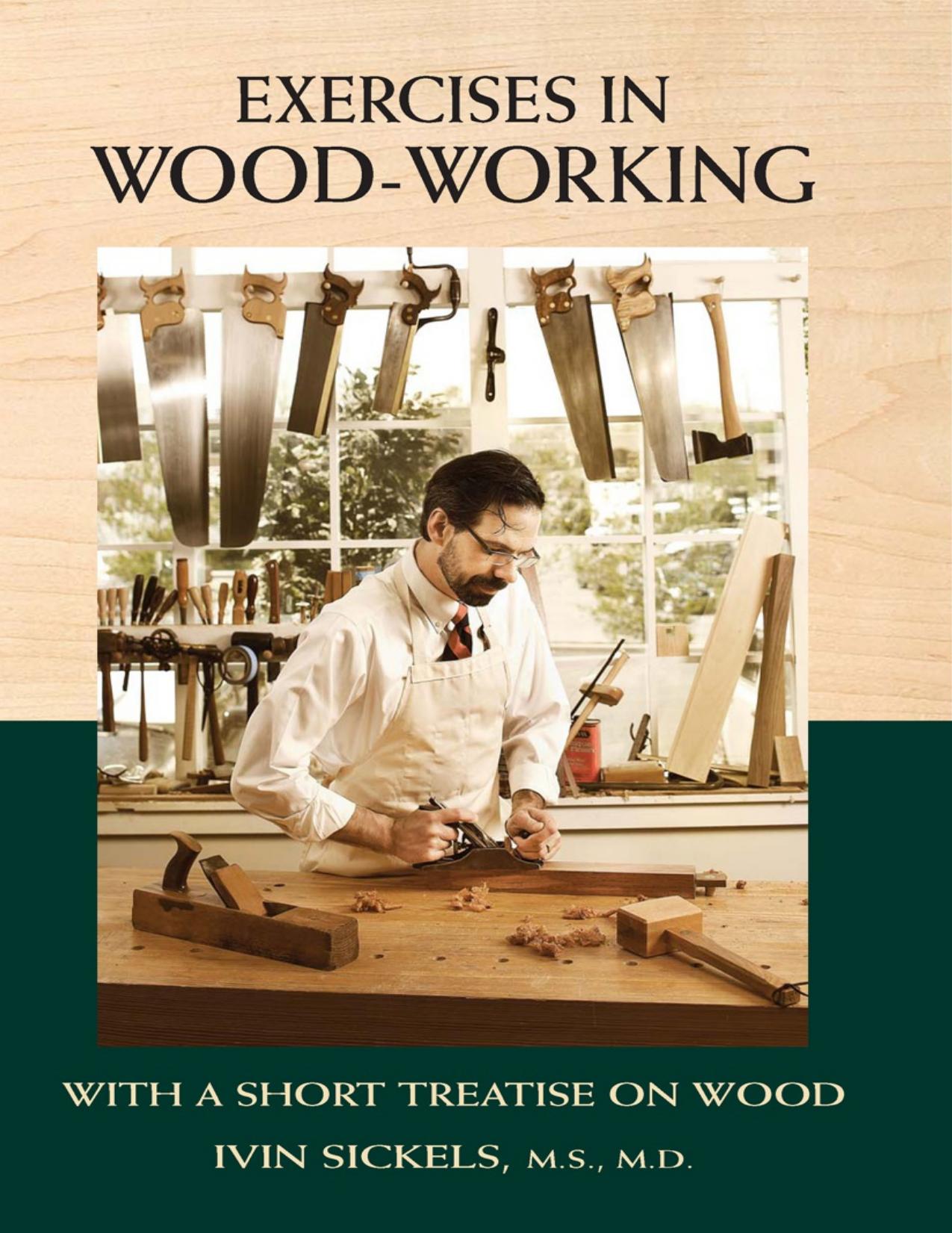Exercises in Wood-Working by Ivin Sickels

Author:Ivin Sickels
Language: eng
Format: epub, pdf
Tags: epub, ebook
Publisher: F+W Media
Published: 2010-05-01T16:00:00+00:00
Fig. 1
Fig. 2
Fig. 3
Fig. 4
Fig. 5
Fig. 6
Fig. 7
Fig. 8
Exercise 3. — Use of the Gouge.
Material. — A block of dressed pine, 2″ wide, ″ thick, and about 6″ long.
Work. — To shape a molding with gouge and chisel.
Lay oixt the block as shown in Kg. 1, using the measures as given in Fig. 2. The form of the molding, an ogee, as seen on the end of the block, a, Fig. 1, is sketched on the wood, or, as is the practice in shops, is marked on the end from a thin pattern, Fig. 2. The lines b, b, Fig. 1, are drawn by the rule and pencil.
In cutting with the gouge, apply the same directions given for the use of the chisel. Cut small shavings, hold the gouge obliquely, as shown in Fig. 3, test frequently with the try-square, and avoid cutting beyond the marks. The hollow portion should be cut first with the gouge, then the small rectangular piece in the upper part of the molding cut out with the chisel, leaving what is called a quirk, and lastly the top rounded by the chisel. In cutting the quirk, the chisel is held by the blade and drawn along the pencil mark on the top of the block, cutting like a knife-edge, and the wood pared down to the bottom of the cut; the chisel is then again used like a knife, and more pared off, this process being repeated until the entire quirk is cut.
To return the molding, the end is given the same form as the face, a, Fig. 4. This form may be marked on the end, from a piece of molding held against it, by the marking-point of the bench-knife, or by measuring points along the curve with the rule, and marking through them with the pencil. The return is cut down upon a waste board with the gouge and chisel. In cutting across the grain with the gouge, it must have a circular motion, which is the same in effect as the oblique cut of the chisel.
In drawings, the form of a molding is always indicated by a section of it, as shown at c, Fig. 4
In Fig. 5 is represented a core-box, made by pattern-makers. It is an example of gouge work.
Fig. 6 shows a molding coped, or fitted to another. The shape of the end of a molding for coping may be obtained by sawing the end in a miter-box.
GOUGE
EX. 3.
Download
This site does not store any files on its server. We only index and link to content provided by other sites. Please contact the content providers to delete copyright contents if any and email us, we'll remove relevant links or contents immediately.
Audition by Ryu Murakami(4093)
The Body: A Guide for Occupants by Bill Bryson(3791)
Adulting by Kelly Williams Brown(3663)
Housekeeping by Marilynne Robinson(3397)
Zero Waste Home by Bea Johnson(3286)
Be in a Treehouse by Pete Nelson(3206)
Seriously... I'm Kidding by Ellen DeGeneres(3098)
Better Homes and Gardens New Cookbook by Better Homes & Gardens(2950)
Barkskins by Annie Proulx(2877)
The Healing Self by Deepak Chopra(2792)
Hedgerow by John Wright(2772)
The Life-Changing Magic Of Tidying Up- The Japanese Art Of Decluttering And Organizing (v5.0) by Marie Kondo(2742)
Spark Joy by Marie Kondo(2671)
The Genius of Japanese Carpentry by Azby Brown(2602)
The Cellar by Natasha Preston(2592)
Work Clean by Dan Charnas(2557)
120 Days of Sodom by Marquis de Sade(2428)
The Book of Numbers by Peter Bentley(2400)
A Monk's Guide to a Clean House and Mind by Shoukei Matsumoto(2400)
